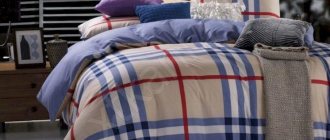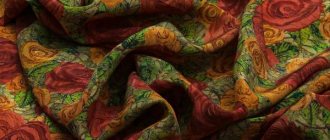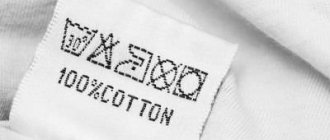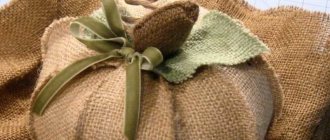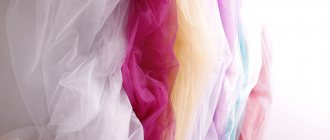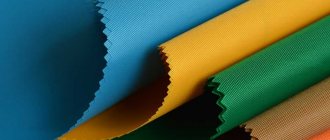There is no such fabric that would excite the minds of fashionistas the way crimplene did. At least Soviet fashionistas. Every self-respecting beauty should have at least one, or better yet two, outfits made of crimplene in her wardrobe.
But, as Coco Chanel said: “Fashion is what goes out of fashion.” So the crimplen quickly lost their ground. After all, his main trump card - durability - has become his disadvantage. No woman wants to wear the same dress for years.
Chanel, Coco
French fashion designer, founder of the Chanel fashion house.
What type of fabric is this
Crimplene is an easily washable, wrinkle-resistant synthetic fiber fabric. It is made from polyester synthetic fibers using the false twist method. Fibers twisted in this way come out of the spinning machines with volume, while remaining strong and thin. Then, in other machines, the threads are subjected to thermal effects, which makes the fibers soft. Later the threads are woven into cloth.
Crimplene colors
Crimplene is produced in all post-Soviet countries; in Western Europe, its main supplier to the world market is Germany. Italian crimplen is distinguished by its refined design and bright colors.
Catalog of synthetic fiber fabrics
Sixties fashion
It was in the sixties of the last century that the widespread use and use of synthetic materials began not only in the manufacture of household items and other things, but also in clothing. The latter made such a strong impression on the people of that time that its colors and roughness are still associated with the sixties.
Soviet fashion
Crimplene is a very practical material that did not require additional care in the form of ironing, as it does not wrinkle and has good density and the ability to retain its shape. It was used to make:
- Dresses;
- Coat;
- Sundresses;
- Suits;
- Blouses;
- Underwear.
Blouse from the 60s Important! Even swimsuits were made from crimplene. Despite its elasticity, it does not have good hygroscopicity. Moreover, the material is hard and electrostatic. This did not prevent it from being used even for such purposes. Fashion was paramount.
Even in those days, this textile was not for everyone, since it contributed to the development and activation of allergic reactions due to its synthetic nature and ability to accumulate dust. That is why it is strictly prohibited for allergy sufferers.
Vintage swimsuit
In the CIS, which was then still the USSR, the fabric appeared in the late 60s, and the peak of its popularity came in the 70s. Despite its popularity, textiles of this type were in short supply, although they could be obtained, especially in large cities.
Women often dreamed of fashionable crimple suits, but their cost, even second-hand, reached 300 rubles. Not everyone could afford this, because this amount was comparable to the average person’s salary.
70s dresses
History of the origin of crimplen
This synthetic matter appeared in the UK in the laboratory of a well-known chemical company in 1946. The name was given to it by the Krimpal Valley, where this laboratory was located. To be fair, it must be said that three years later in the USSR an analogue of this fabric was created, called lavsan.
Lavsan
Oil fabric lavsan: what is known about it? What are its characteristics?
more details
But it was used only in the defense industry, and Soviet women were forced to “chase” imported cream.
Soviet chemical breakthrough
In the Soviet Union, nylon stockings appeared only 20 years later. The country's leadership finally paid attention to the success of the bourgeois chemical industry and gave domestic scientists the constant task of “catch up and surpass!” This happened thanks to the assistance of the Minister of Culture Ekaterina Furtseva, who was approached by the chemist Nikolai Semenov.
The latter had long been tormented by the catastrophic lag of Soviet science from the world, and Ekaterina Alekseevna, as a woman, was extremely partial to beautiful things. She found an approach to Khrushchev and at one of the party plenums she made a proposal that changed the entire future fate of Soviet fashion.
The government has allocated huge amounts of money to create the chemical industry literally from scratch. The business went so successfully that in 1956 Nikolai Semenov received the Nobel Prize. The “chemicalization of the entire country” was in full swing. Citizens enthusiastically bought household items made from new materials: plastic brushes, floor lamps, oilcloth for tables, etc.
Fabric composition and its properties
Crimplen consists of synthetic threads - lavsan or polyester. Modern manufacturers include other threads in the composition: viscose (increases breathability), elastane (increases elasticity) and polyamide, which makes the surface of the fabric smoother.
Crimplene properties:
Does not wrinkle or shrink during washing
Strength and high wear resistance
Keeps its shape well
Does not fade under sunlight
The airy luxury of nylon stockings
The first synthetic boom occurred in the late 30s. Then the American Wallace Carothers, who headed the experimental chemical department, invented nylon. Thin elastic threads are perfect for the production of women's stockings.
Finally, the owners of slender legs were able to demonstrate them in all their glory. Transparent, well-stretchy and perfectly fitting stockings appeared on the shelves. They did not lose their shape and did not move like the silk and cotton ones that the ladies wore before.
During the first day in New York, about 4 million pairs of stockings were sold. Customers could not contain their impatience and sat down to try on new clothes right on the street. Gone is the era of blisters and wrinkles under the knees. Now the women's legs looked flawless. DuPont made enormous profits.
Advantages and disadvantages
Positive qualities of crimp:
- inelastic, can be used for years, will not stretch or deform;
- antibacterial, bacteria do not linger on its surface;
- clothes made from crimplene do not wrinkle even after long-term storage in a folded form;
- easy to care for, does not require expensive delicate detergents.
Like all synthetic fabrics, it has many disadvantages:
- poor breathability: clothes made of this material are cold in winter, hot in summer;
- high electrostaticity, especially in the cold season;
- does not absorb moisture well, but if it gets wet, it takes a long time to dry;
- may cause allergies in people with sensitive skin;
- the fabric does not drape well, so the choice of styles is small;
- the material is very afraid of the slightest spark: even the ash from a cigarette can burn a hole and irrevocably damage the thing.
Care
There are no difficulties when caring for crimplen. Things are washed both by hand and by machine using the “synthetic” mode. Washing temperature 30 C0. Use washing powder or gel. It is better to dry away from heating devices.
There is usually no need to iron crimplen items. If the need arises, the temperature should be no more than 100 C0. On the iron this is indicated by one dot (for silk, wool, polyester).
Clothes can be stored folded and on hangers.
What standards are used in production? What do they take into account?
All standards for the production of synthetic fabrics, including crimplene, are enshrined in GOST 29298-2005 Cotton and mixed household fabrics. General technical conditions":
- hygroscopicity - compliance with GOST3816-81;
- water resistance - GOST 12088-77;
- thread stretching - GOST 3813-72;
- color fastness to light - GOST 9733.1-91;
- color fastness to washing - GOST 9733.4-83;
- electrostaticity - GOST 19616-74.
Fashionable men's shirts
Men did not lag behind women at the turn of 60-70. Fashion designers offered them bright nylon shirts with long collars, ruffles and even frills. The colors are from the “eye-popping” series. Nowadays, only representatives of sexual minorities can be found in such outfits, and even then only during gay pride parades.
Starved for beautiful things, Soviet citizens enjoyed the crazy fashion of the 70s and did not want to part with crimplene and nylon. They were ready to endure any hardship just to be fashionable. Soviet fashion models suffered the most. They had to wear synthetic outfits for 7-8 hours, sweltering from the heat and itching.
At this time, the fashion for synthetics was almost over abroad. Natural fabrics are again in demand. Foreigners who came to the USSR for all kinds of festivals never tired of being amazed at how disdainfully Soviet citizens treated natural silk, crepe de Chine, cambric, and wool. However, in the Union they learned to appreciate these riches much later.
As for underwear, Soviet women had practically no choice. Continuing the theme: The brilliance and poverty of Soviet fashion models: Curiosities and secrets of underwear in the USSR.
Did you like the article? Then support us, click
:
Crimplene is a synthetic fabric that was popular in Soviet times. Currently, the material is not very widespread due to the emergence of a large number of other synthetic and mixed fabrics that are superior to it in a number of characteristics. Nevertheless, you can sew original retro outfits from crimplen. In order for products made from this material to last longer, you need to properly care for them.
For what purposes can it be used?
Crimplene became popular in the 60s and 70s of the 20th century.
Then they made clothes from it:
Swimwear
Baby clothes
Suits
Coat
Crimplene dress
Of course, the fashion for crimple has long since faded away and now it is used mainly to make clothes for retro shows. Seventies styles are in fashion - trapezoidal dresses in bright colors, and crimplein is an ideal option for such models.
Bright crimple mini
At the end of the 60s, the West posed another challenge to the USSR. In the States at this time, another chemical breakthrough occurred: aniline dyes for fabrics were invented. They painted any material in unimaginably bright colors for those times. Several batches of imported clothing in acid colors were brought to Moscow. The fashionistas got another shock.
From that moment on, synthetic fabrics of rooster colors with flashy patterns came into fashion seriously and for a long time. Nylon, nylon, crimplene - only these materials were in demand. In addition to the chemical boom, minis came into fashion. Short synthetic shorts began to be worn by everyone, regardless of figure, age and social status.
On the streets of Moscow one could easily meet a size 58 married matron in a pink mini-dress made of crimplene. Such an outfit was not considered indecent. On the contrary, he was terribly fashionable and evoked envious glances from passing ladies who were not lucky enough to acquire the same beauty.

